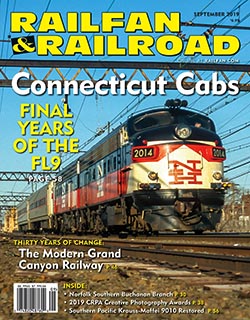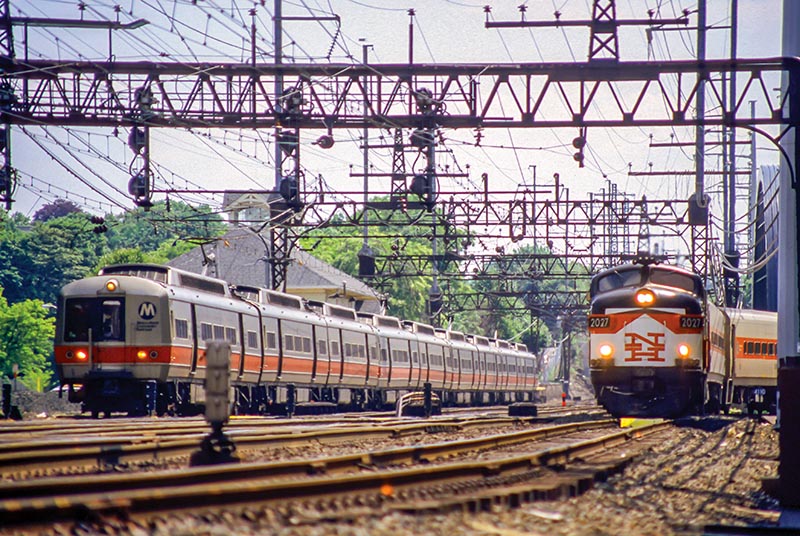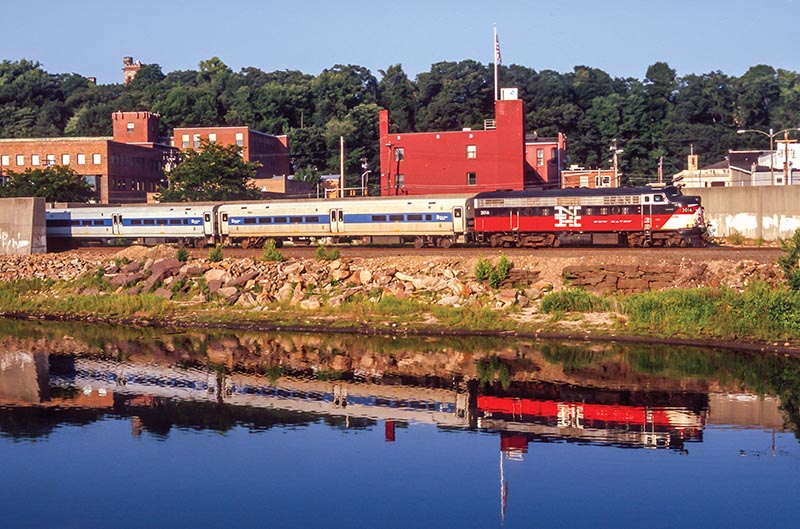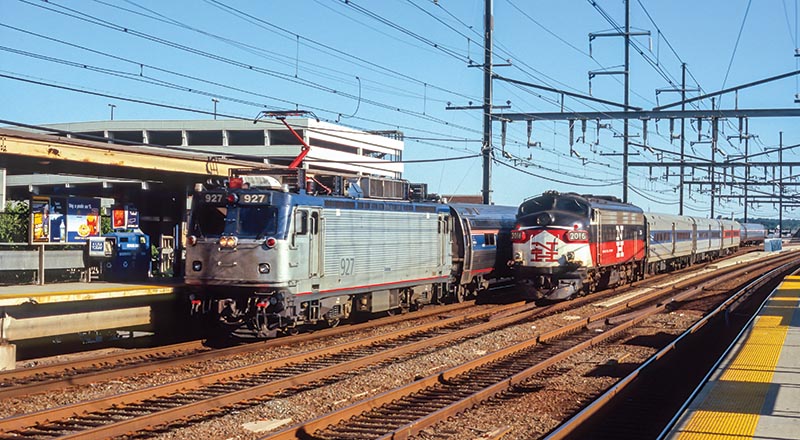 By Otto M. Vondrak/photos by the author
By Otto M. Vondrak/photos by the author
Looking back, I feel we took them for granted. While others were born too late to enjoy the golden age of first-generation diesels, I was spoiled by the bounty of cab units that still plied their home rails not more than a stone’s throw from my home.
The dual-mode FL9s were unique to New Haven Railroad. Built by EMD between 1956 and 1960, they also represented the last production of F-units in America. Designed to operate off its diesel generator or draw power from an electrified third rail, the FL9 was an attempt by New Haven to eschew its costly high-voltage catenary and power generating systems, which they hoped to abandon. Instead, both the electric zone and the units designed to kill it off survived into the 21st century.
My first encounter with FL9s was when I was four years old. We lived along the old New York Central Harlem Division at Katonah, N.Y., just 45 minutes from Grand Central Terminal. By the 1980s, the FL9 fleet was down on its knees, suffering from decades of deferred maintenance under Penn Central and Conrail. My earliest memories are of trains that were as noisy as they were colorful, clinging to patches of Socony Red as well as shades of MTA’s yellow and blue. When electrification was extended to Brewster in 1984, Metro-North whisked the diesels away to the Hudson and New Haven lines. Diesels made a limited return in 1991 when the railroad began a new through service to the end of the line at Dover Plains, but that train was the exception rather than the norm.

South Norwalk, Conn.
What was most exciting was the series of 10 rebuilds sponsored by Connecticut Department of Transportation in the 1980s and 1990s that returned resplendent in Herbert Matter’s famous red, white, and black mid-century design often attributed to New Haven President Patrick J. McGinnis.
By the time I returned to the area in 2002, FL9s had been banished from the main lines, replaced by General Electric P32AC-DMs. If you ventured out to the branches, however, you could still find classic cab units working in daily service, performing nearly the same duty they were designed for 50 years ago.
Interested in capturing New Haven FL9s working in home territory, I made inquiries with other railfans about taking pictures on the Danbury and Waterbury branches in Connecticut. I was met with scoffs and told these north-south lines were nothing but tree tunnels with no good shots. Engines facing north made good lighting difficult. I immediately took this as a challenge.

Ansonia, Conn.
My frequent trips began in 2004. I pored over maps, tracing my finger along the route, carefully observing where the tracks turned this way and that, cross-checking against Google satellite views for forgotten openings that could be exploited. In the field, I discovered laid-back branch lines that fundamentally hadn’t changed much since New Haven days. Quaint country depots beckoned riders, while two- and three-car trains scooted along the single track.
We knew it was coming to an end; we just didn’t know how quickly. A sense of urgency accompanied each trip to New Haven territory. Every frame fired off felt like a small victory. The anachronism was surreal, these ancient covered wagons following a path to the future.
The cab unit era ended on Metro-North with a whimper, not a bang. New Brookville BL20GH locomotives were delivered during the summer of 2008, bumping FL9s from branch line assignments. Trips were scrubbed, weather turned foul. By the middle of February 2009, all F-units were officially stricken from the roster and placed into storage for a call that would never come…


